

The following article by Mary Elle Hunter was taken from the Carolina Business Journal.
Lee County, formed in 1907 from parts of Chatham, Moore and Harnett counties, is marking its 2nd century with a concerted effort by a group of business and community leaders to promote Sanford, the county seat, and the county itself as a primary destination in which to live, work and play in the greater Triangle region of North Carolina. In October a much-anticipated new logo and tagline for the city and the county were unveiled, together with an economic and community action plan to further advance the quality of life that its 60,000+ residents currently enjoy.
The Second Century team, leading the drive, was organized late last year at the suggestion of Norman Block and Ray Covington, private citizens with business interests in Lee County. Kirk Bradley, one of those initially approached by the pair, relates how Block and Covington came up with the idea of getting a group of concerned individuals together to discuss the possibility of providing private funding for promoting Sanford and Lee County.
Bradley says the first meeting was attended by about 50 people. That number was winnowed down to a steering committee or Research Team, of which Bradley became chairman. The team then arranged with Rose & Associates Southeast of Davidson, NC and Arnett Muldrow & Associates of Columbia, SC to act as consultants for Phase 1 of the project.
At the recent unveiling of the logo and tagline, Bradley said,
”We want others to know the rich history and bright future our area offers. This is only the beginning of the many great things that will come out of the project, and we are proud the residents of Sanford and Lee County are standing behind and supporting this endeavor.”
The logo was designed to demonstrate the classic, yet progressive, spirit of Lee County. The tagline, “Well Centered,” describes both the geographic elements and the quality of life that the community represents.
Plans call for the Sanford Area Chamber of Commerce, with its 600 members, to work with other organizations to implement the community action plan, and the Chamber will oversee the implementation of the marketing plan. According to Bob Joyce, President of the Chamber, the goal of the Second Century project was to create a brand identity that conveys the unique characteristics that make the county the perfect place to live, work and play. “This effort must engage everyone and all of us must be aware of the community’s desire to promote the best about the place we call home.”
Now as the Second Century project team moves into the next phase of its five-year plan, it would appear that they have momentum on their side. A goal to raise $250,000 for funding the marketing campaign in Phase 2 has already resulted in commitments being received for $150,000 of that amount. Kirk Bradley hopes that they will be able to raise the balance by mid-February.
At a November meeting, the Second Century team met with several local officials to receive an update on present and future projects. Sanford Community Development Director Bob Bridwell provided a review of the plans his department has for the city, including beautification efforts to roads. For the downtown area of Sanford, the plans call for updates to the walkways and older buildings, as well as a greenway project already underway.
County Manager John Crumpton described the county’s Capital Improvements Plan, which includes renovations to Lee County High School. He said, “We have some big projects to tackle and some serious financial obstacles to overcome.”
Later on, Crumpton observed the exciting part about the Second Century project is the way the local businesses have embraced the concept for a branding and marketing effort for the county. “Right now, we have given our encouragement to these efforts, but we haven’t been asked for, or made, any financial commitment to the program. Ordinarily the exact opposite would be true, and that is the reason I think the Second Century program is going to be successful.”
Over the course of the last four years, major changes have been made in the infrastructure of Lee County, including completion of a county-wide water system, completion of several four-lane road improvements throughout the county, and the construction of two new schools – a high school and a middle school – as well as substantial improvements to the industrial park. All of which provides a good basis for the launching of the Second Century team’s marketing campaign.
The county tax rate is another plus that can be used as one of the reasons people should take a look at Lee County. Despite an increase in 2004 to cover new bonded indebtedness for the two new schools, the tax rate is still at a reasonable 75 cents per thousand, and the goal of the county is to keep the rate at the same level until the next revaluation in 2011.
When asked about the effects on the county’s financial picture by the national economic downturn, County Manager Crumpton related that they have put a freeze on all hiring for vacant positions. We had eight that were already open, and they, as well as any new vacancies, will be held open until the economy gets better.
“In addition, we have cut back on any out of state or overnight travel, on capital equipment, purchases, and we have developed budget reduction plans of 2 and 4 percent to address any revenue shortfalls. At the present time, the county has put most capital projects on hold. However, we are still working on school renovations and the repairs of the San-Lee Dam Recreational facility.”
The optimistic side of the picture, however, is that even in these bleak economic times, according to Kirk Bradley, the Second Century project seems to have strong support. “The entire community appears to be very enthusiastic about moving forward with the marketing campaign, as well as an action plan to improve all aspects of quality of life issues in our community.”
Chamber of Commerce President Bob Joyce agrees that the Second Century project has a better chance for success than past comparable efforts. “What makes this one different is we are better communicators this time, and we are not reinventing the wheel. We’ve got a lot of things already working for us. We just have to get them working together.”
As an example, Joyce points to the city’s and the county’s cultural assets. A pottery tradition which includes artisans such as the world-renowned Cole family, whose work is displayed at the Smithsonian Institute in Washington, has been the impetus for an annual two day pottery festival that brings between 7,000 and 8,000 people to Sanford.
The Temple Theatre, listed on the National Register of Historic Places, features musicals and plays performed by top-quality actors, some from New York, as well as jazz concerts and appearances by well-known entertainers. A statewide competition for high school bands, a community orchestra and chorus are among the other attractions offered Lee County residents.
Another example cited is the quality public school system from which the younger people of Lee County derive an ongoing benefit. Coincidentally, a sixteen-member superintendent search committee representing community organizations in Lee County, appointed by the Board of Education, has recently concluded its work. And a new superintendent of schools should be named before the end of 2008, to oversee a school population of 9,677 from kindergarten through 12th grade, of which more than 200 are enrolled in Early College High School.
The Early College program affords highly motivated students an opportunity to earn a high school diploma and an associates degree from Central Carolina Community College in four to five years, without the cost of tuition or books. Some ECHS students enroll with an eye toward high-paying jobs in industry, completing their associate degree in a technical field and moving quickly into the workforce. Others may transfer to a four-year institution and gain a bachelors degree.
The area’s potential strengths, Joyce thinks, lie in the continued residential developments in the Raleigh-Durham region, which have been slowly creeping down into Chatham and Lee counties, and from Fayetteville, with the recent BRAC study showing a substantial increase in population. He also mentions the unconfirmed reports that Progress Energy may be considering an expansion of its Harris nuclear power plant in New Hill. If that became a reality, it could mean an increase in construction-related jobs and need for additional housing in Lee County
Bob Joyce concludes, “I believe the future of Lee County looks excellent.”
Lee County; The Southern Base Of The Research Triangle Region
By Mary Elle Hunter
The 12th smallest county in North Carolina is one of the most productive in terms of manufacturing, with upwards of 38% of the jobs in the county’s employment base absorbed by the manufacturing sector. Lee County is comprised of just 259 square miles, but it also has been one of the fastest growing counties in the state, posting an average 2% increase in population annually.
Sandwiched between the thirteen-county Research Triangle region to the north and the Fayetteville area with Fort Bragg to the south, location is an important factor in the county’s attracting and maintaining its manufacturing base. Bob Heuts, director of The Lee County Economic Development Corp., points to the variety of items produced in the county, “Everything from the faucets in your home to the bricks in your house to the cloth for the clothing you are wearing can come from Lee County.”
The county is filled with major manufacturers. The Lee County Industrial Park (LCIP) in the northern area houses Wyeth Pharmaceuticals, Caterpillar Industrial, GKN Driveline, maker of vehicle parts, and a number of smaller industries. Wyeth, which produces pediatric vaccines, over the last four years invested $250 million and brought 1,000 jobs to the area. Caterpillar, and ancillary companies, have invested $10 million during the same period.
The southern corner of Lee County is home to the 28-building campus of Static Control Components and its estimated 1,400 employees. The company began as an entrepreneurial start-up, operating out of a basement workshop several years ago. Now a worldwide leader in its field, Static manufactures toner cartridge components, electrical testing tools, and products to protect sensitive electrical parts from moisture and static with a distribution system encompassing 163 countries.
To the east, a one million square foot Coty plant, producing fragrances and skin care products, is located. In the same general area is a Tyson foods operation, turning out taco shells for Taco Bell restaurants, and Moen, maker of innovative bath and shower systems.
Companies that have invested millions of dollars in expansions to their Lee County operations since 2004 include Frontier Spinning Mills, which opened as a small company in 1996, Hydratube, 3M, Pentair, Challenge Printing Company, and Lee Brick and Tile. Together with General Shale, Lee Brick and Tile continue the tradition which describes the county as one of the leading brick manufacturing areas in the United States.
“Although the brick business is very slow right now,” Bob Heuts comments, “Lee County is still very much in the brick manufacturing business.” Noting that there is a brick plant listed for sale on the website of the Lee Economic Development Corp, he says that the property is an older facility with a minimal value, and new owners of the site would in all likelihood tear it down and use the land for other purposes.
The trend for the expansions and the additions in the manufacturing sector is away from worker-intensive operations, and more focused on capital intensive processes, Bob Heuts observes. “It is the only way that U. S. companies can compete in a global economy. The trend is true not only in Lee County, but across the state and the nation. Companies have invested heavily in cutting edge methods, with machinery based on updated technology, even some of them using robotics. Or course, that has meant a decrease in the number of low-skilled jobs, but the jobs that remain or are created are typically better paying.”
Referring to the Research Triangle Regional Partnership of which Lee County is a member, Bob Heuts mentions, “We couldn’t do it without them. We can’t be in all the places across the country and the world, but they can and do represent us at trade shows and consultant’s visits. Naturally, we try to participate in some of the shows, but we value their support. We get clients through their marketing efforts on our behalf.”
Bob Heuts also believes that the pro-business attitude of the county and municipal officials is another significant reason that the economic development of Lee County has been successful. The Economic Development Corp. is a publicly funded organization, with 66% of the budget coming from the county, and the balance from the city of Sanford, the county seat, and the town of Broadway.
“The collective position of wanting to see good jobs created and investment added to our county tax base is a key factor to our being able to continue to provide services for our growing population. If we aren’t all of one mind in terms of what we have to offer here in Lee County, and without our mutually-held feelings supporting new growth, we couldn’t remain in business.”
One of the significant benefits to new and expanding business is a well-trained workforce. Central Carolina Community College provides three state-supported training programs which have been used by the majority of companies in the area. Dr. T. Eston Marchant, president of the college, outlined the role of the college in economic development recently.
“We are the front door for economic opportunity in the community, the college for people to gain skills in technology and other vocational training or prepare for university transfer. It is vital for a community college to play that role and play it well.”
Another important advantage that maximizes Lee County’s accomplishments in economic development is the Sanford-Lee County Regional Airport. Since opening in its present location late in 2000, the airport has made an impact on aviation in the Research Triangle Region.
Designated as a reliever for Raleigh-Durham International, it is located on more than 700 acres just off U.S.1, about 20 miles from Cary along a four-lane stretch of highway. It serves corporate pilots to and from the manufacturing base in Sanford, as well as Triangle-area pilots seeking an easier, less-crowded alternative to RDU.
Sanford-Lee County Regional Airport, Bob Heuts explains, is the third largest public general aviation airport in the state with 1000 aircraft based on its field, and it hosts nine on-site businesses and generates an annual economic impact of $280 million. At a meeting earlier this year with the state’s aeronautics council, the airport’s long range expansion plans were the topic of discussion.
The airport’s capital improvement plan includes adding more hangars, extending its runway, and adding a 20-acre corporate park designed for companies in the aviation industry.
The runway addition would create a 8,500 foot strip, allowing larger aircraft to land safely, although its present 6,500 foot length already eclipses what is currently available at most general aviation airports.
Bill Williams, director of the North Carolina Department of Transportation’s Division of Aviation, sees a bright future for the local airport. Citing its location near the state capital, world-class universities and Raleigh’s proposed I-540 Outer Loop, Williams sees continued growth ahead. “It will become one of the more significant airports over the next few years.”
Another plus for the Lee County Economic Development Corp. is their meaningful relationships with the local Chamber of Commerce and the other private boards and committees that make up the core of the business community. “If there is something going on in downtown Sanford, we definitely want to be a part of it,” Bob Heuts stresses, “so that we can include it in our sales presentations to prospective industries.”
Speaking about the current national economic downturn, he comments “We have seen our unemployment rate shoot up from 4-5% several months ago to 8.2%, and I predict that it may go higher even yet. It is a sign of the times. All of the companies are so far holding on as best they can to sustain their business during this difficult period. The unemployment picture affects the manufacturing as well as the retail segment of our Lee County economy. Most of the companies I have talked with have scaled back to their core workers, and are trying to position themselves for “rightsizing.” During the downturn they are not producing as much and are taking a sharp look at their processes, operating as lean as they can.”
Bob Heuts believes that Lee County has been very fortunate in the past, and it is a positive testimony to all the organizations, public and private, working together and understanding what needs to happen in the community at large to continue to move forward. “When it comes time to talk to a prospective client, any minor disagreements are shelved, and everybody’s on the same page. We all want good things to happen here in Lee County.”





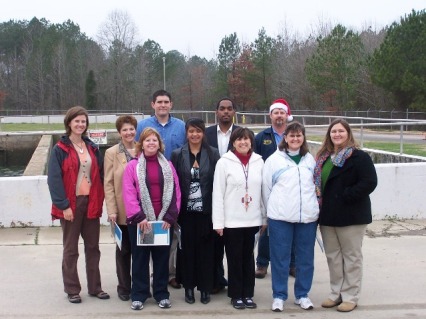
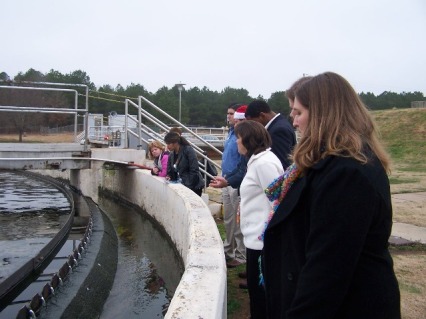






























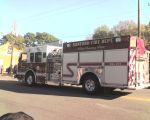

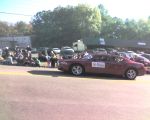





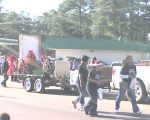
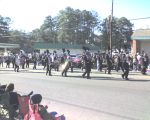




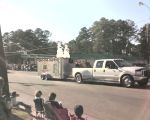










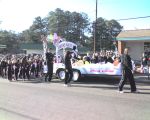
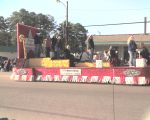




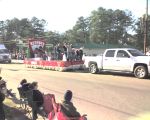

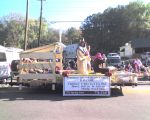


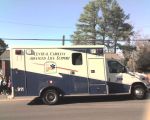

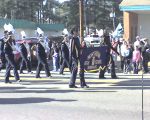



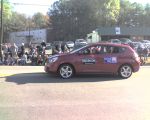





















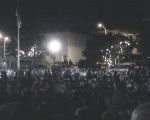





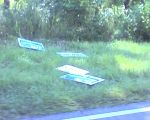






Recent Comments